Where to begin with Istanbul? Well, I was trying to organize a trip outside of Europe for a while now, but both times I was not lucky and I ended up staying at home. I didn't know much about Istanbul before starting to research it, but because I was alone I wanted to go to a safe city, one that I could feel comfortable wandering alone, but that at the same time had a non-European feeling to it. I settled on Istanbul, a city that conflates Western and Eastern cultures in interesting ways.
Istanbul was the capital of many different empires - most notably the Byzantine and the Ottoman empire - and it went by different names: Byzantium, Costantinople and now Istanbul. With one foot in Europe and the other in Asia, Istanbul has been one of the most important cities in European history. Sacked during the Fourth Crusade of 1202-04 because of trickster Venetians who saw it as a rival city, it was then probably the largest and most sophisticated city in the world. It was conquered in 1453 by Sultan Mehmet II, and became the capital of the Ottoman Empire. At the height of its power, the Ottoman Empire controlled much of Southeastern Europe, Western Asia and North Africa, so the influence of this city is felt in a considerable portion of the world. The empire collapsed only after the First World War, and now Turkey is ironically fighting its battle to enter the European Union.
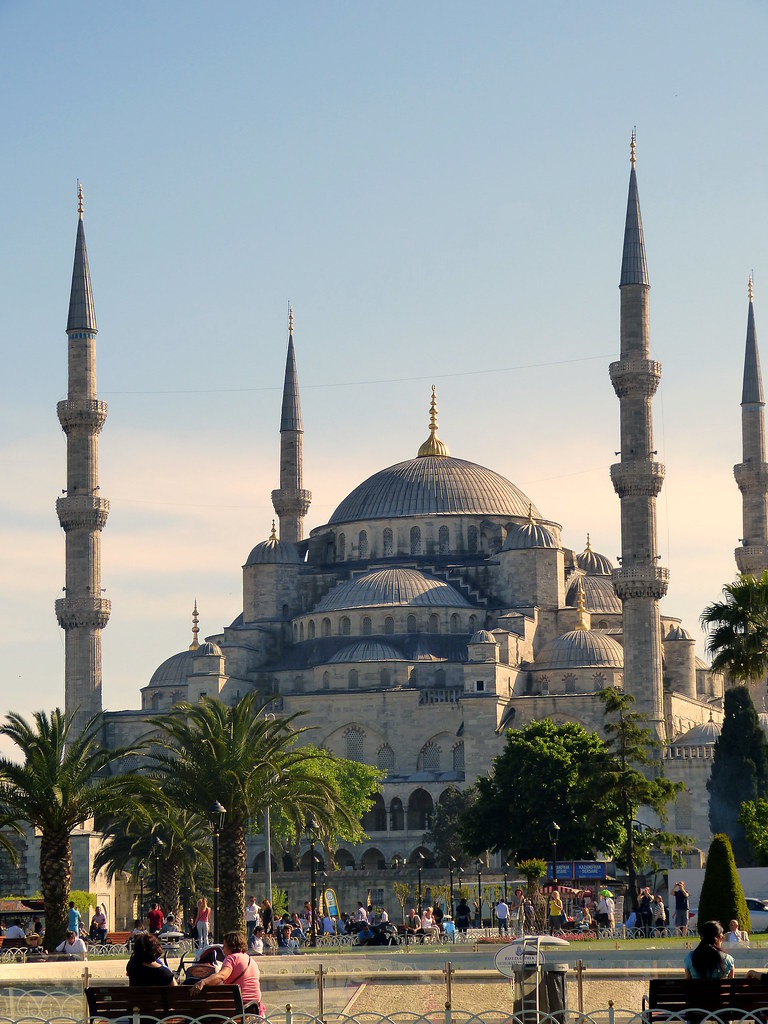 |
First glimpse of the main square of Sultanahmet
|
After my comfortable direct flight from Venice, I took the train into town, and then an efficient tram. It left me in Sultanahmet, right across from the main square. Sultanahmet Park, with Hagia Sophia on one side and the Blue Mosque on the other, is an extremely well-kept square, with a very big fountain the middle. In the evening there are water games all over the square and the fountain is lit up in bright colours to match the most famous mosque of the city. When I was sitting on this square, enjoying the perfect weather Istanbul has in May, I sometimes felt that I was in Disneyland or in any other amusement park. It's probably the pointed minarets of the mosque that reminded me of a fairy-tale castle, but the perfume of the narghilè (also called hookah or shisha) helped too.
 |
| Water games in Sultanahmet Park |
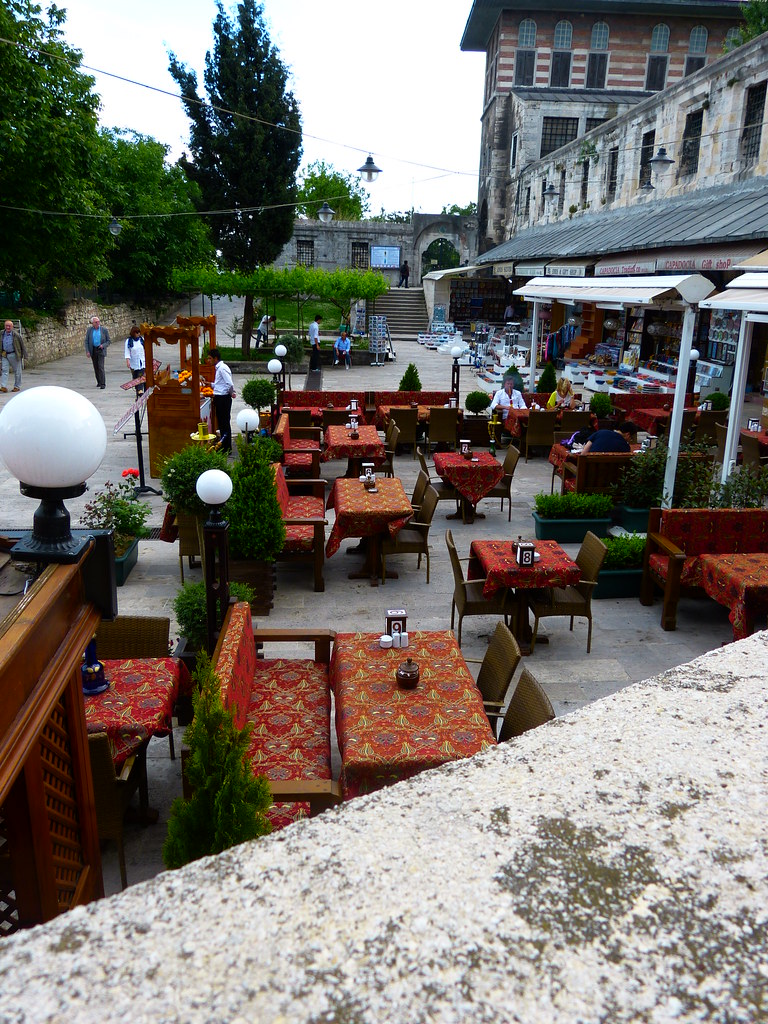 |
| Café in Sultanahmet |
As soon as I arrived, I started looking for my hostel and flavouring the magic of Sultanahmet at the same time. It is a very touristic neighbourhood, with carpet sellers and many touts, but also where many of the historical sights are located. Some "naïve" tourists mistakenly call it the "Arabian part of Istanbul". I can't blame them, because some parts of it seem to be made to indulge the fantasies of Western tourists. Things like sultana pants for sell (which I love by the way, but I don't think they are authentically Turkish, and the name is certainly a Western invention), or picture sessions in fake Oriental clothes inside the Basilica Cistern are a couple of examples of the exploitation of stereotypes and ideas we have about the Orient. In spite of all this, Sultanahmet is the place to be if you want to immerse yourself in the history of Istanbul. Because this was my first visit here, I spent plenty of time in Sultanahmet, spreading my visits to the three most important tourist attractions here - the Blue Mosque, Hagia Sophia and Topkapi Palace - on three separate days.
Sultanahmet is also the right place for all kinds of surprises. While I was walking around Akbiyik Caddesi - I always got lost in that maze of streets - I saw three men playing a board game. I asked them what game it was, and they explained to me that it was backgammon. I had never seen someone playing it, I told them. They were a bit surprised when I told them I was Italian, because apparently it is also played in Sicily.
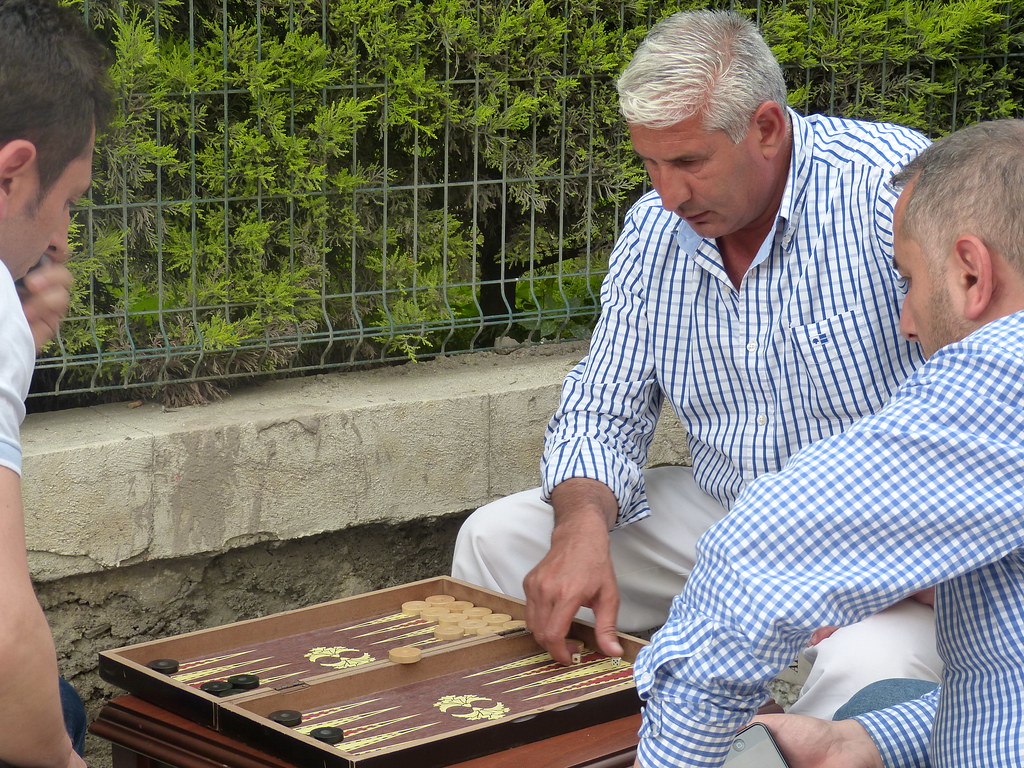 |
| Playing backgammon |
I walked through Arasta Bazaar, and I was immediately mesmerized by the colourful mosaic lamps and by the strange spices, some of them with dubious names made for tourists. The men selling their merchandise were calling me, trying to guess my nationality (they were always wrong), and doing everything they could to attract my attention. Arasta Bazaar was built at the same time as the Blue Mosque as a market area, and the rents from the shops go towards the upkeep of the mosque itself. As a matter of fact, the word arasta indicates a row of shops near a mosque. The Spice Bazaar was also built as an arasta! The Arasta Bazaar is now very touristic, but enjoyable. There are so many beautiful things in the markets in Istanbul that I didn't know where to look or what to buy! Scarves, pottery, jewellery with original patterns and colours that I had never seen before: everyone can find something to buy here.
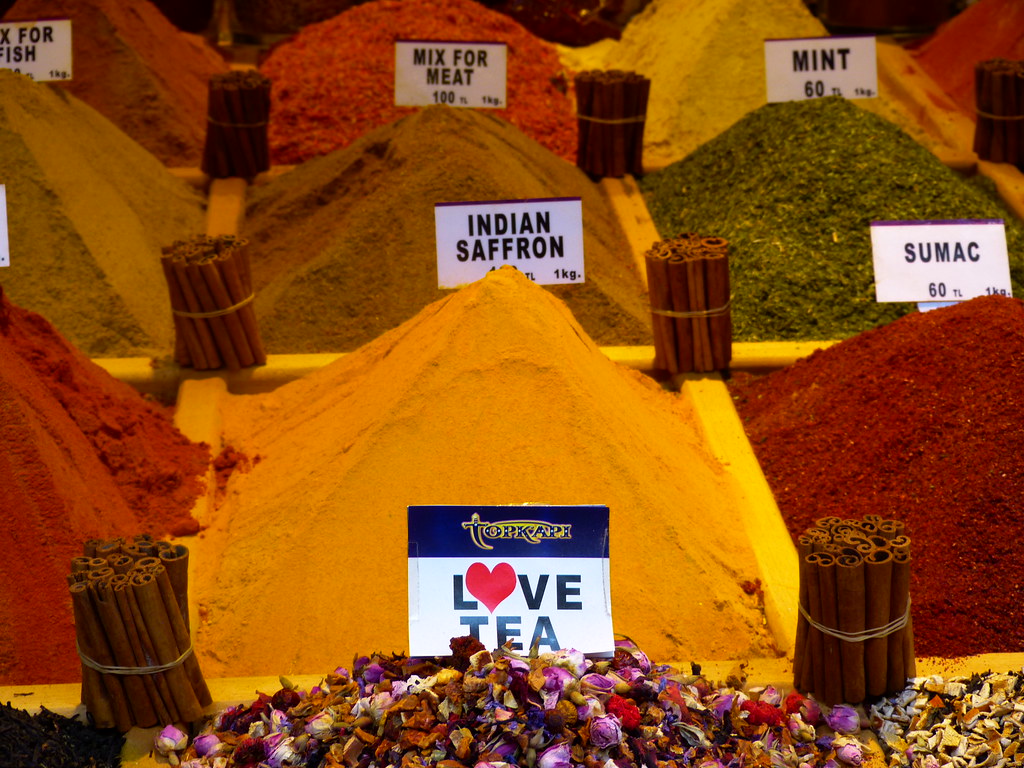 |
| Spices in the Arasta Bazaar |
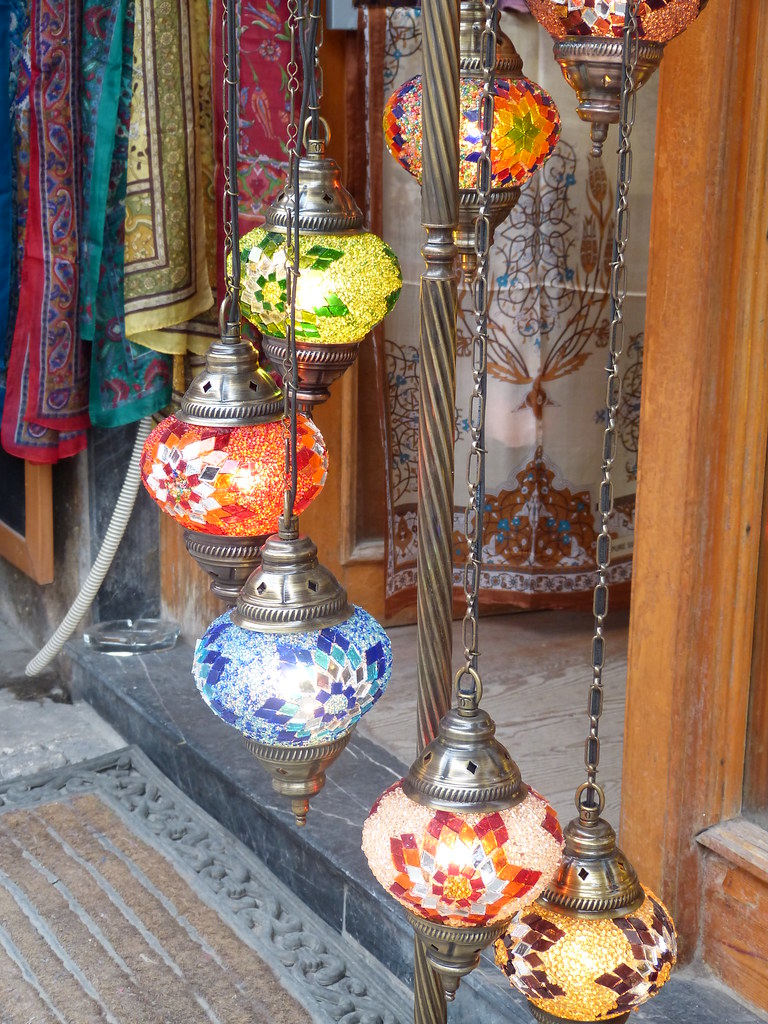 |
| Colourful mosaic lamps |
Not long before I arrived in the city I heard the azan, the muezzin's call to prayer, for the first time in my life. I found it very poetical, even though I can't understand the words. Most of the calls are still sung live and are not recorded. I was surprised that people kept on working and didn't stop to pray or at least to reflect for one moment.
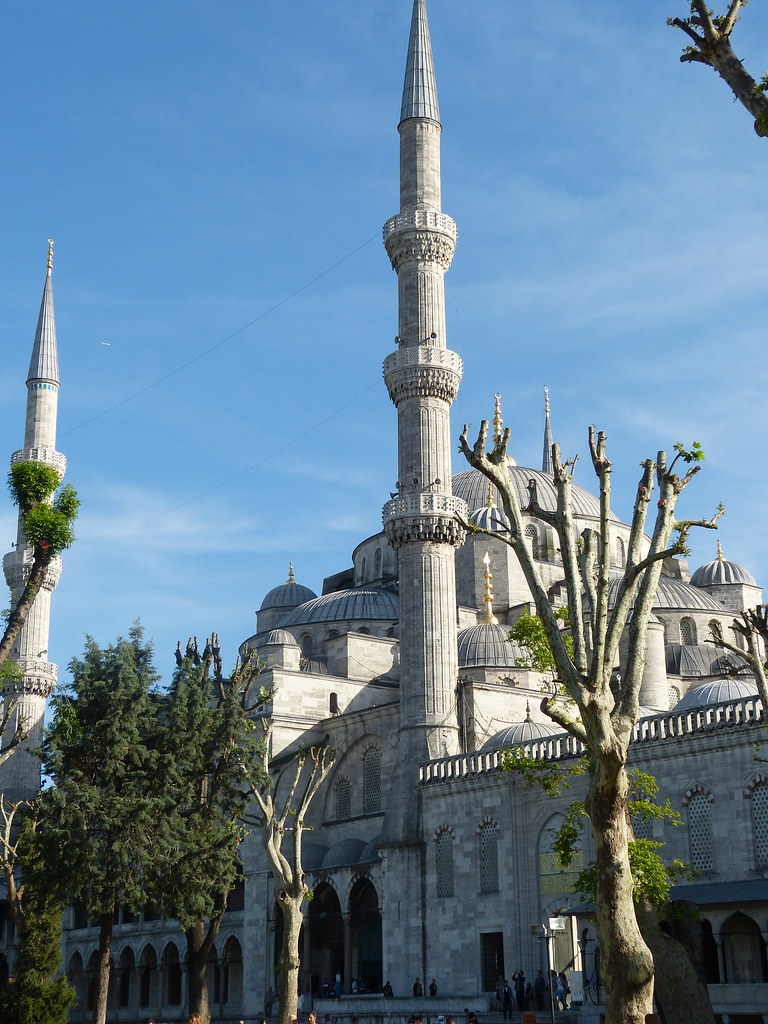 |
| The Blue Mosque seen from one side |
Wait for my report on all things Istanbul: the sightseeing, the shopping, the neighbourhoods and the food...







nice post! i can't wait to see istanbul in a few weeks!
ReplyDeleteI'm sure you will love it!
Delete